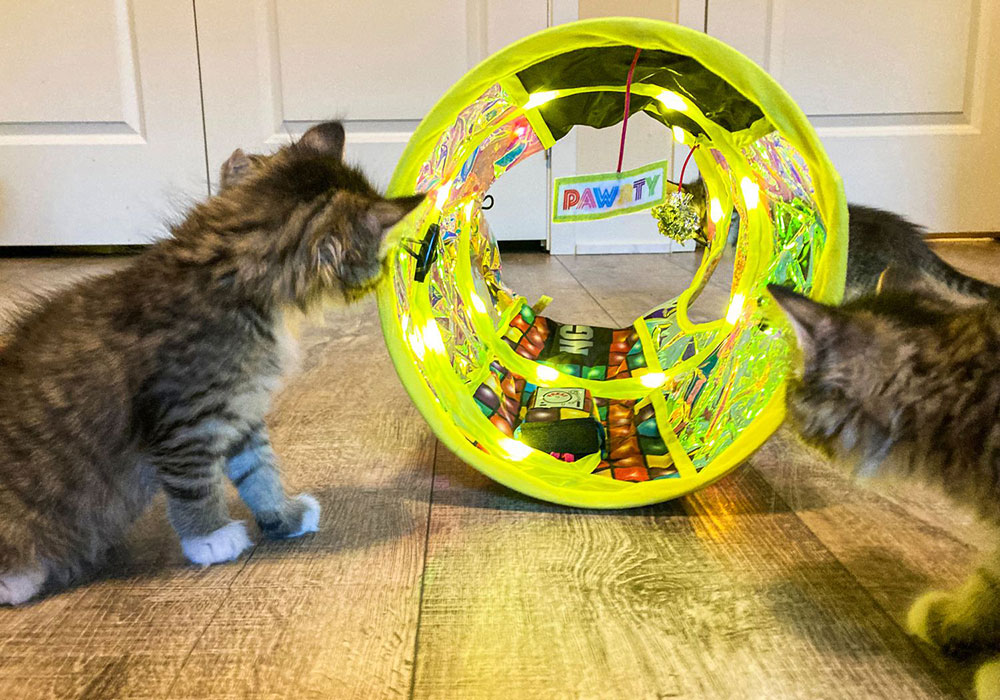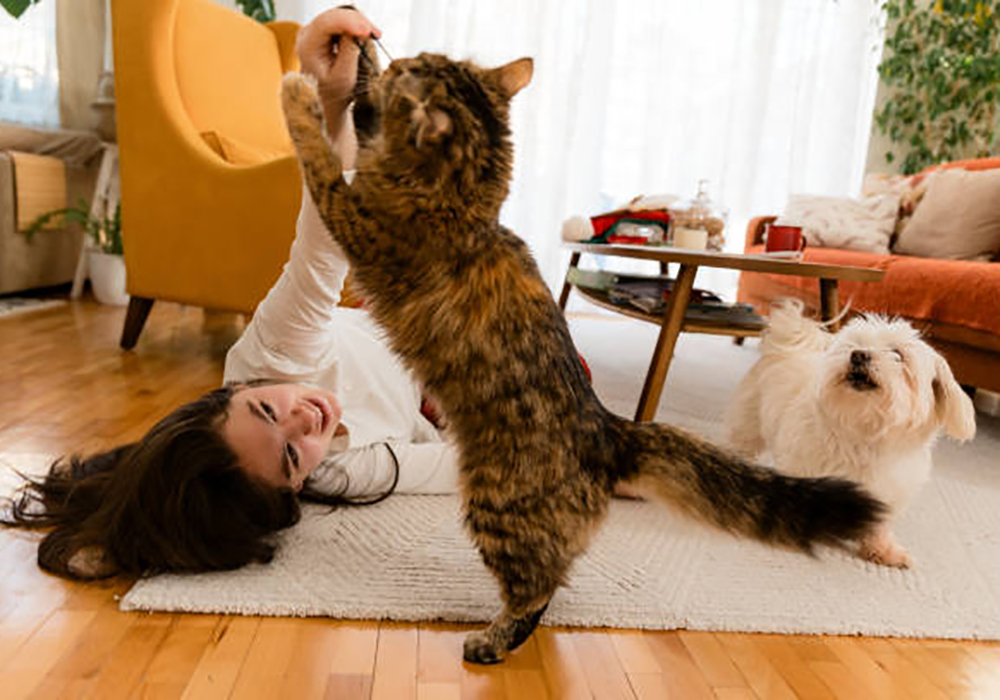Why Should You Play With Your Cat?
Playtime is a fantastic way for you and your cat to connect and have fun together. It’s not just about having a good time—it’s also about meeting your cat’s physical, emotional, and mental needs. Since every cat is unique, understanding your feline’s personality, environment, and preferences will help you create play sessions that really engage and benefit them.
Benefits Of Play For Your Cat’s Wellbeing:
Boosts Physical Activity
Play helps your cat burn off energy and stay physically fit. Engaging in interactive play with you (like using wand toys), or offering solo toys and climbing structures (like cat trees or tunnels) is essential, especially for indoor-only cats who lack access to the outdoors.
Supports Mental And Emotional Health
Playtime helps satisfy your cat’s natural hunting instincts. Cats love to stalk, pounce, and “capture” prey. In the wild, this predatory behavior occupies much of their time. Indoor cats without proper outlets for these instincts may experience boredom or stress, leading to behavioral issues like over-grooming. By offering a variety of engaging play options, you help maintain your cat’s mental health and prevent these frustrations.
Strengthens Your Bond
Playtime fosters a deeper emotional connection between you and your cat. Cats may not always want cuddles, but many thrive on interactive play. A study showed that cat owners who play and bond more with their cats tend to provide better veterinary care and preventative health measures. It’s a win-win for both you and your furry friend!
Helps Prevent Obesity And Health Issues
Cats that don’t get enough physical exercise can develop obesity, diabetes, and other health problems. Regular play can keep your cat at a healthy weight and prevent these issues, ensuring a longer, healthier life.

Types Of Play Your Cat Will Love
Object Play
This involves playing with inanimate objects like toys or even things you create (like paper balls or ping pong balls). Cats enjoy chasing, batting, and swatting at these items, which mimic the behavior of prey.
Social Play
When multiple cats are in the household, social play happens naturally. It’s a fun and healthy way for cats to interact, pounce, and “hunt” together.
Solitary Play
This is play where the cat engages alone, often with increased energy. It can include running around, batting toys, or even chasing invisible prey!
Choosing The Right Toys
Cats are picky about toys. The best way to figure out what they like is by experimenting with different textures, shapes, sizes, and even sounds. Some cats prefer soft toys, while others love things that crinkle or make noise. Your cat’s age, personality, and preferences all play a role in what toys they’ll enjoy most.

Tips For Playtime
Keep it interesting: Cats get bored quickly, so rotate their toys often.
Use food puzzles: These can stimulate both their mind and their appetite.
Encourage exploration: Provide vertical spaces, hiding spots, and scratching posts for variety.
Short, engaging play sessions: Try playing before meals to mimic the hunt and reward with treats afterward.
Do’s:
Interactive play with toys: Teach kittens to use toys rather than hands or feet as play objects.
Use wand toys: These keep you at a distance from your cat and simulate prey-like movements.
Play regularly: Make it a daily habit—mornings, before meals, or when your cat has the zoomies.
Create play scenarios: Move toys like they’re flying or crawling to keep your cat’s interest.
Let your cat “catch” prey: Reward them by letting them catch the toy at the end of the session.
Provide variety: Rotate toys and try out new ones to keep your cat mentally stimulated.
Play with each cat separately: if you have multiple cats, to ensure everyone gets enough attention.
Don’ts:
Avoid using your hands or feet as toys: it can lead to biting or scratching issues.
Don’t tease your cat with toys in your hand: it can frustrate them.
Don’t leave toys lying around unattended: keep them fresh and in motion, like real prey!
Don’t rely only on laser pointers: While fun, they can be frustrating if they don’t have a “catchable” target.
Don’t leave dangerous toys like strings or small parts unattended: as they can be harmful if ingested.










